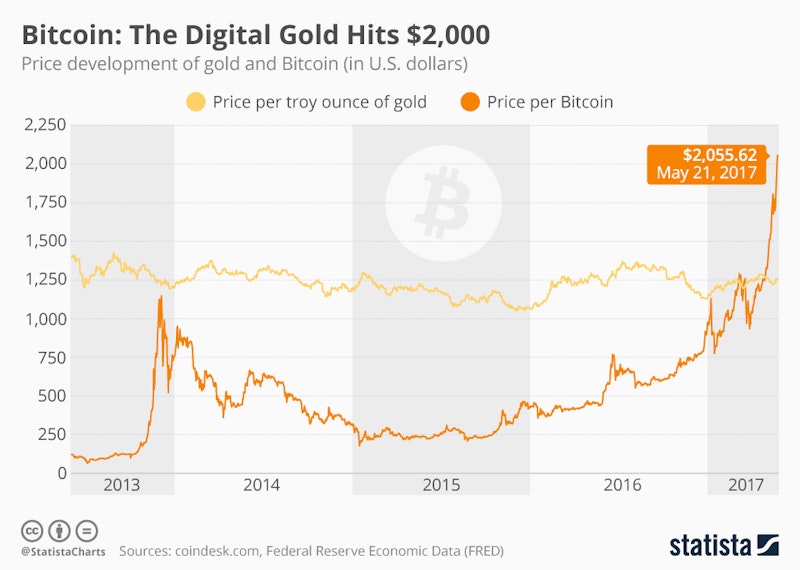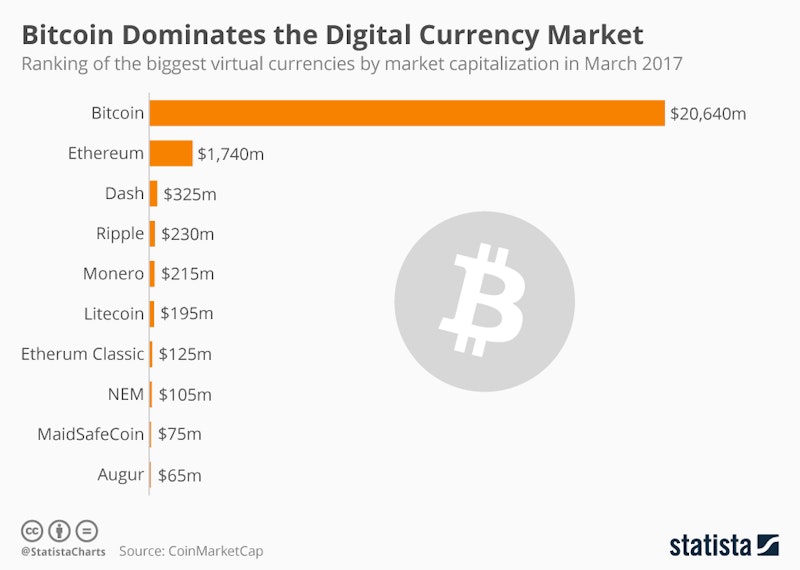In the News
Digital currencies see a new price boom
24th May 2017
This article from BBC news underscores the fact that we're in the middle of a digital currency boom, with Bitcoin and Ethereum traded at record highs.

Reading the piece might prompt you to think about the main characteristics of money, as well as the four key functions of money. to what extent do digital currencies fulfil these functions, and what is stopping them from being more widely traded.
Money is defined best by what money does. Money – in its various forms – fulfils various key functions including a medium of exchange, a unit of account, a store of value and a standard of deferred payment.
Background on Bit Coin
Bitcoin is a digital currency that was launched by a secretive entrepreneur in October 2008, with the aim of being “a new electronic cash system that is fully peer-to-peer with no trusted third party”. Bitcoins are created by users (a.k.a. “miners”) who allow the Bitcoin system to use their computing power to process Bitcoin transactions. These miners are also rewarded with the some of the transaction fees paid by those who use Bitcoin. A few retailers, especially online, accept Bitcoin, partly because the transaction fees are lower than those of credit cards. However, Bitcoin’s value has been volatile. (Source: tutor2u economics glossary, 2017)

You might also like
Monetary Policy - Managing Demand
Study Notes
What is Money
21st September 2015
Financial Economics - Introduction to Money and Finance
Teaching PowerPoints

Should we worry about the death of cash?
13th June 2017
De-Monetisation
Study Notes
Demonetization: When 86% of India's Currency Disappeared
28th August 2020
Covid-19 speeds up the decline of cash
19th January 2021

With prices rising, are people turning back to cash?
8th August 2022
Daily Email Updates
Subscribe to our daily digest and get the day’s content delivered fresh to your inbox every morning at 7am.
Signup for emails